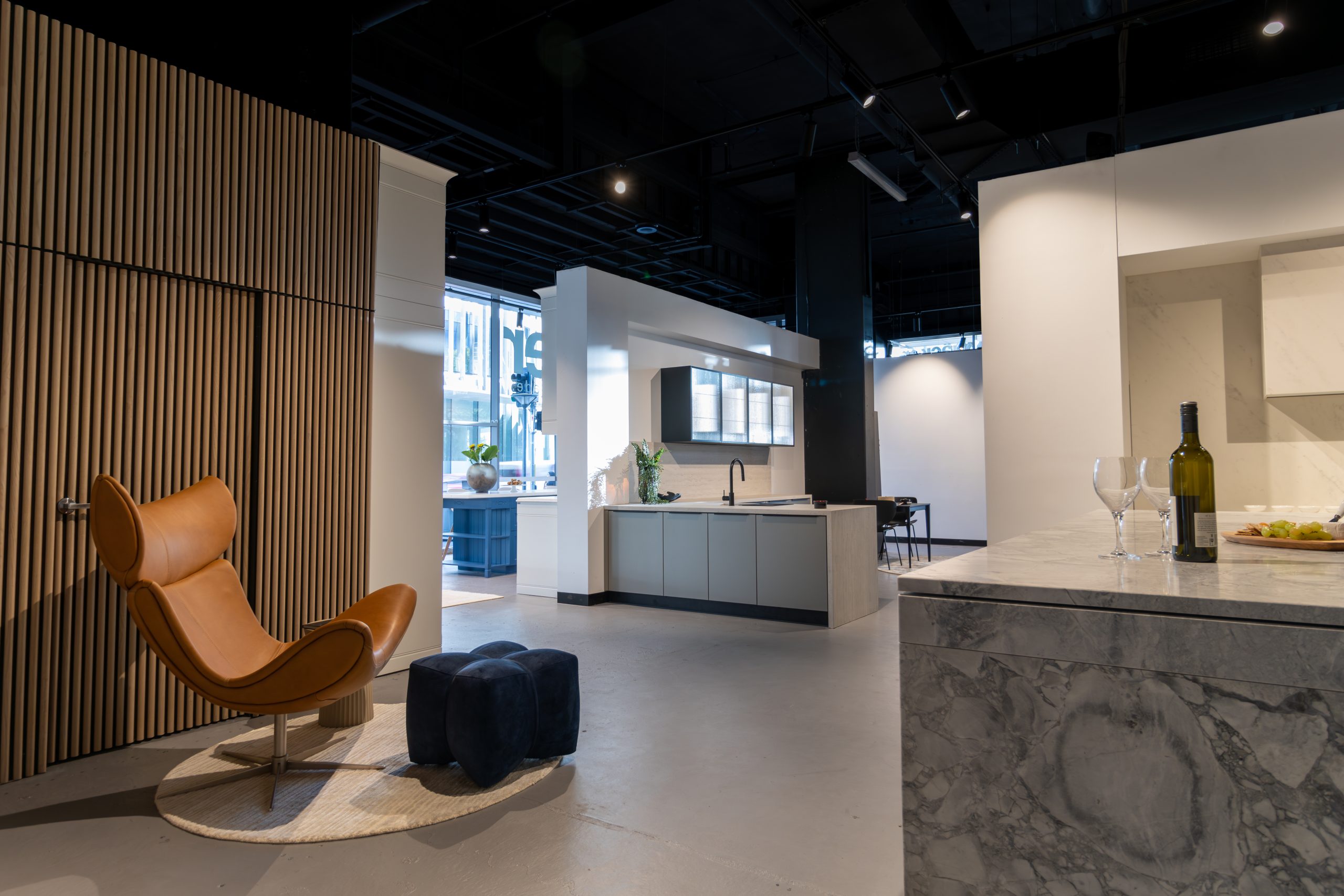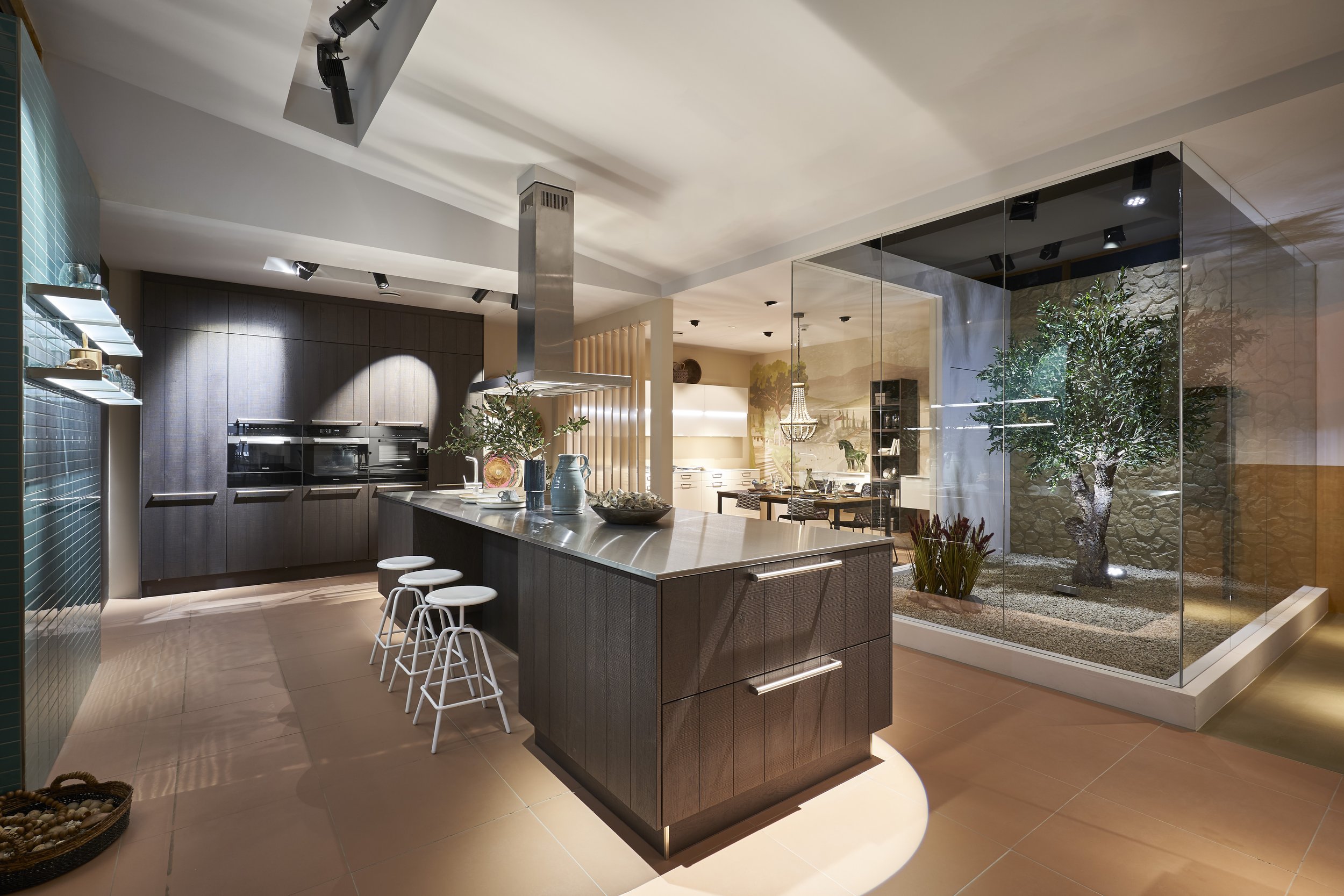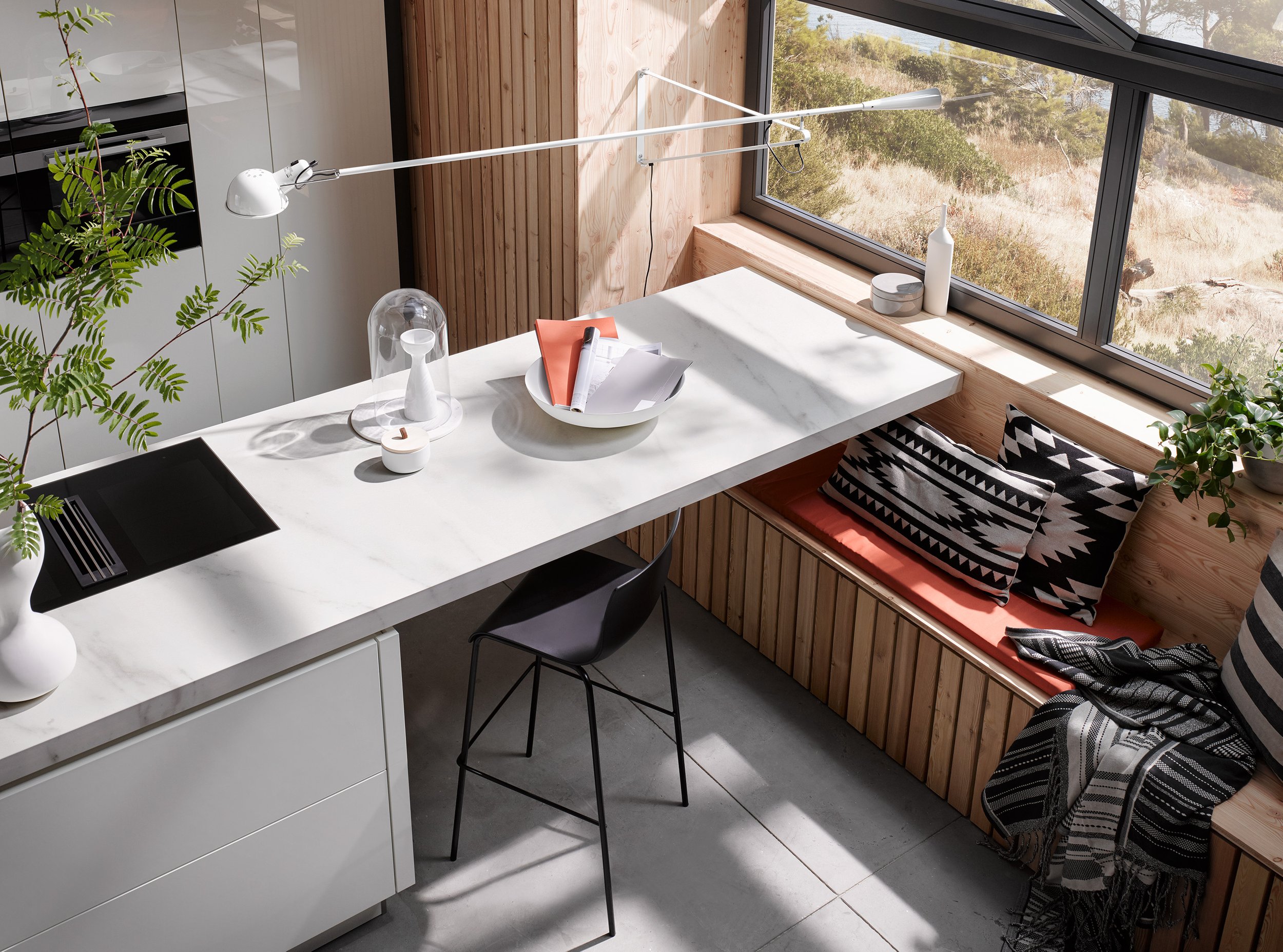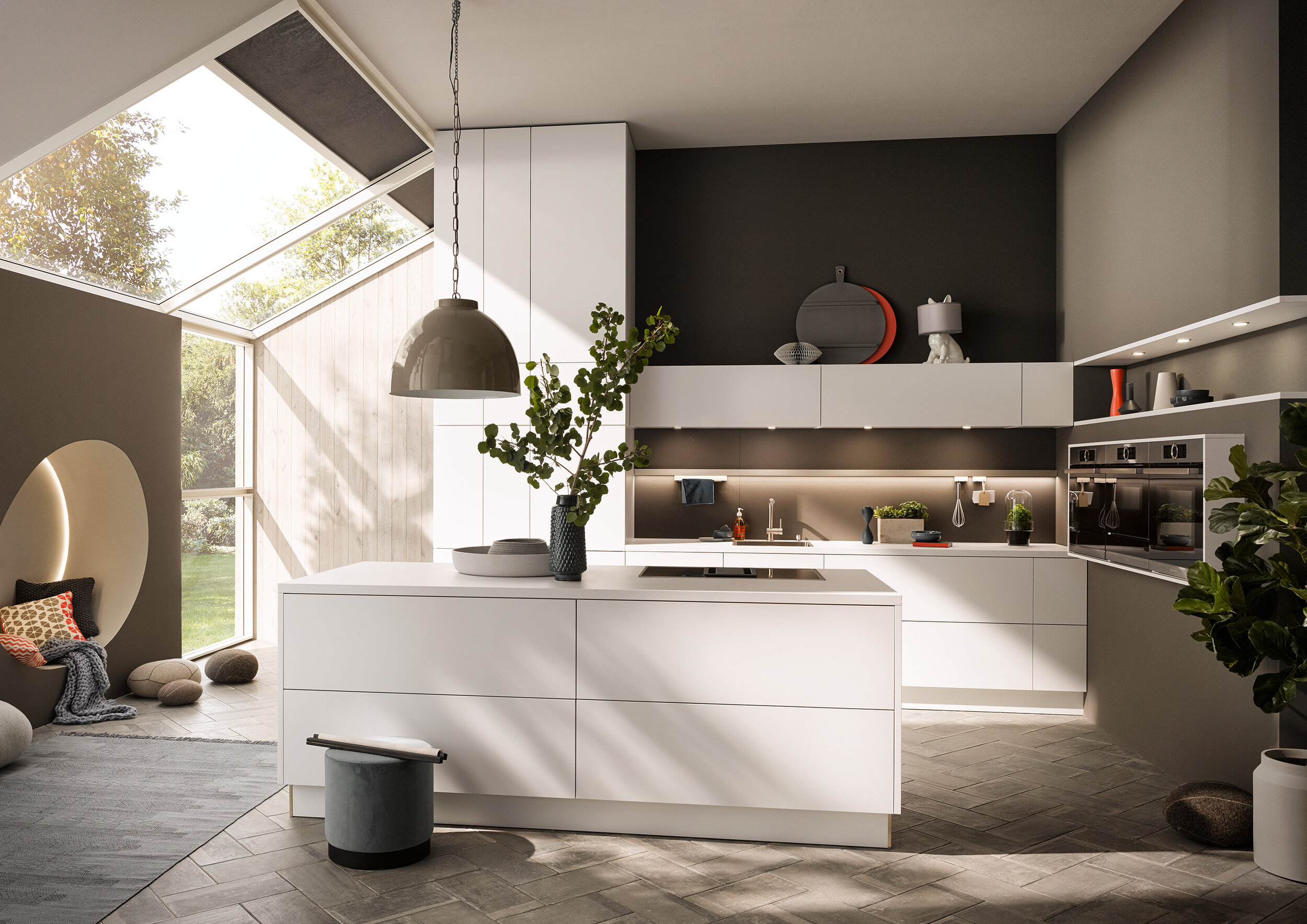
Kitchen Zone Design: Cooking, Prep, Cleaning, Storage, and More
According to Wikipedia, a well-organised kitchen is the cornerstone of an efficient and enjoyable cooking experience. The five functional kitchen zones method is a strategic way to optimise your kitchen space, streamline your workflow, and make cooking a more pleasurable activity. In this guide, we will explore how to organise your kitchen using this method, ensuring every area is utilised to its fullest potential.
Key highlight
- Optimised Workflow: The 5-zone layout (Consumables, Non-consumables, Cleaning, Preparation, Cooking) creates a logical flow that reduces unnecessary movement.
- Designed for Modern Living: More flexible than the traditional kitchen triangle, it suits open-plan layouts and multiple users.
- Smart Storage Solutions: Each zone supports easy access and organisation, from pantry pull-outs to prep-friendly benchtops.
- Expertly Crafted by Häcker: Häcker Australia blends style and function to help you design a kitchen that truly works for your lifestyle.
What are the 5 Functional Kitchen Zones?

A well-organised kitchen is designed around five essential zones, each serving a specific purpose to streamline workflow and maximise efficiency. By thoughtfully planning these areas, movement in the kitchen becomes more intuitive, reducing unnecessary steps and improving functionality.
1. Consumables Zone (Food Storage)
Purpose: This zone is dedicated to storing food items, including pantry staples, refrigerated goods, and dry storage.
How It Improves Efficiency:
- Keeps all food ingredients in one accessible area, reducing time spent searching for items.
- Allows for easy inventory management and prevents overbuying or food waste.
- Ideally positioned near the preparation zone and entry point of the kitchen for quick unpacking of groceries.
2. Non-Consumables Zone (Storage for Kitchenware & Utensils)
Purpose: This zone houses dishes, glassware, cutlery, and servingware, as well as food storage containers and baking trays.
How It Improves Efficiency:
- Keeps everyday essentials close to dishwashing and dining areas for convenience.
- Ensures that plates and cups are stored near dishwashers or sinks for quick unloading.
- Organises utensils and cookware near the preparation and cooking zones to streamline meal prep.
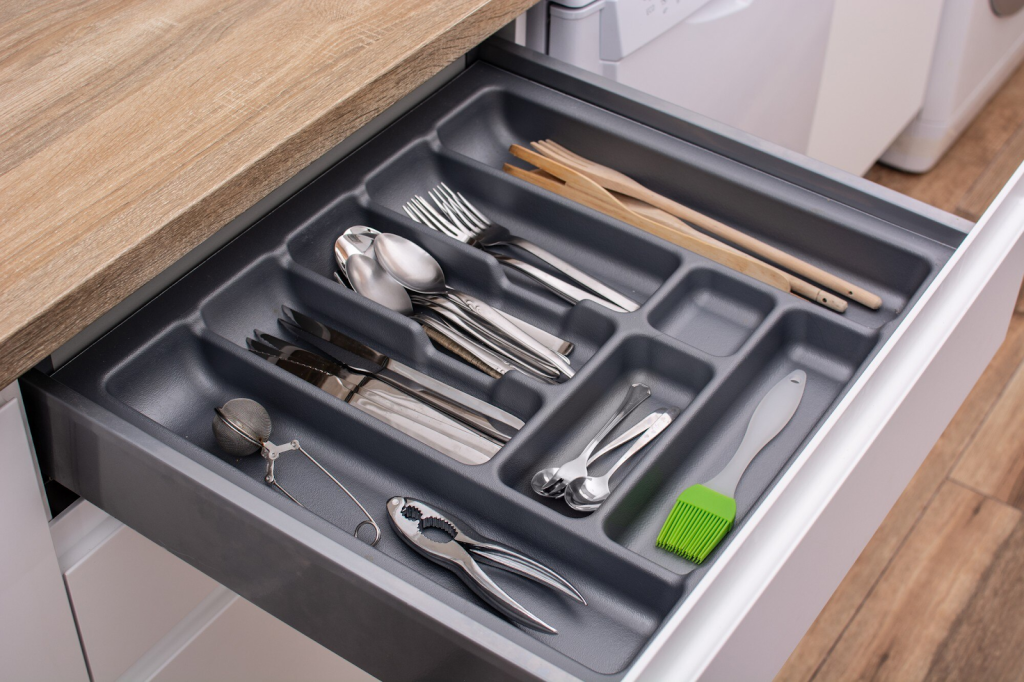
3. Cleaning Zone (Sink & Waste Management)
Purpose: The cleaning zone includes the sink, dishwasher, trash, and recycling bins, everything needed for washing and waste disposal.
How It Improves Efficiency:
- Having a well-placed sink and dishwasher ensures smooth cleanup after meals.
- Keeping waste and recycling bins nearby helps manage food scraps efficiently.
- A designated drying space prevents clutter around the sink area.

4. Preparation Zone (Food Prep & Workspaces)
Purpose: This is the primary workspace for meal preparation, typically including benchtop space, cutting boards, mixing bowls, and small appliances like blenders or food processors.
How It Improves Efficiency:
- Provides a spacious and functional area for chopping, mixing, and assembling meals.
- Positioned between the consumables zone (for easy ingredient access) and the cooking zone (for quick transfer to stovetops and ovens).
- Helps maintain a logical flow by minimising unnecessary movement.
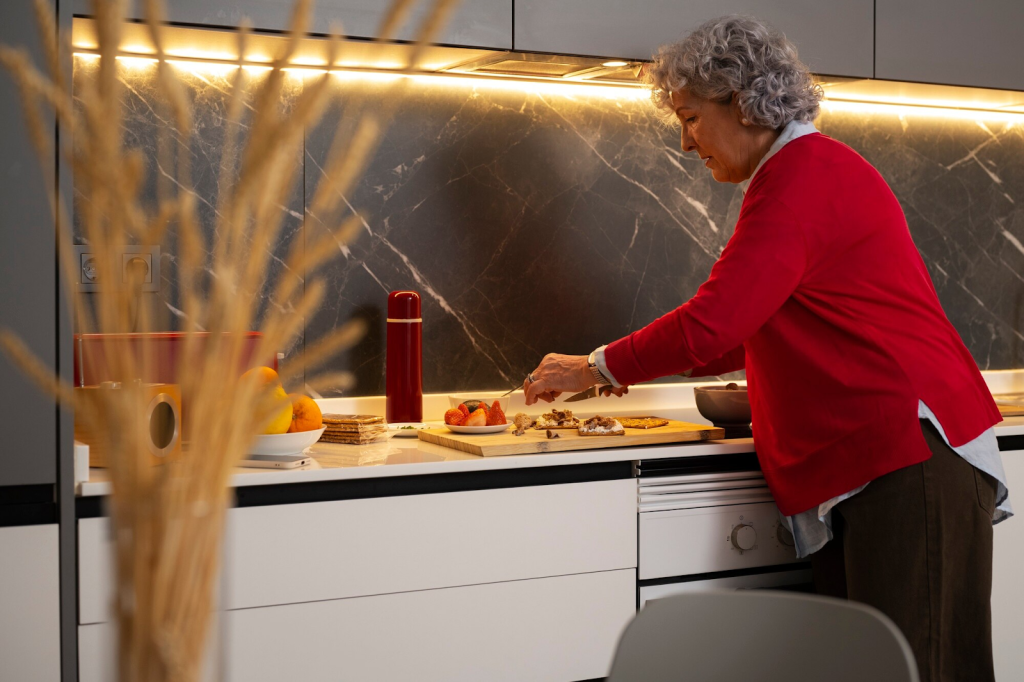
5. Cooking Zone (Stovetop, Oven & Appliances)
Purpose: The heart of the kitchen, the cooking zone includes the stovetop, oven, rangehood, microwave, and other heat-based appliances.
How It Improves Efficiency:
- Centralises all cooking activities, reducing the need to move around excessively.
- Placed near the preparation zone for a smooth transition from prep to cooking.

Why is the 5-Functional Kitchen Zone Method superior to the Traditional Kitchen Triangle?
The Evolution from the Kitchen Triangle to the Five Functional Zones
For decades, the kitchen work triangle was the gold standard in kitchen design – and continues to influence design conversations today. This concept, developed in the 1940s, positioned the sink, stove, and refrigerator at three points of a triangle to create an efficient workflow for a single cook.
The Shift to the Five-Zone Kitchen
As kitchens have grown larger and more integrated into open-plan living areas, the traditional triangle has been replaced by the five functional kitchen zones.
By dividing the kitchen into zones rather than relying on a rigid triangular layout, multiple people can use the space simultaneously without crowding, and the flow of movement becomes more intuitive.
Today’s kitchens are more than just places to cook, they have become the central hub of the home, serving as spaces for:
- Cooking & Meal Prep – With high-end appliances and smart storage, modern kitchens are designed for efficiency.
- Entertaining – Open layouts allow guests to socialise while food is being prepared. Large islands and bar seating create a natural gathering point.
- Dining – Many kitchens now incorporate dining areas, from casual breakfast bars to full dining tables within the space.
- Living & Working – As work-from-home culture grows, kitchens often double as flexible workspaces, with integrated charging stations and comfortable seating.
With these expanded functions, modern kitchen design prioritises flexibility, efficiency, and aesthetics. Open shelving, hidden storage solutions, and high-quality materials ensure that kitchens remain both practical and visually appealing.
| 5 Functional Kitchen Zones | Traditional Kitchen Triangle | |
| Description | Divides the kitchen into five distinct work zones: Food storage, preparation, cooking, Kitchenware storage, and cleaning. | Arranges the three main kitchen elements (sink, stove, and refrigerator) in a triangle to minimise movement. |
| Benefits | – Improves efficiency and workflow in the kitchen. – Creates a more organised and clutter-free space. – Makes it easier to find what you need and get tasks done. – Promotes a more enjoyable cooking experience. | – Minimises the distance travelled between the three main work areas. – Creates a sense of balance and harmony in the kitchen. – Is a well-established and time-tested design principle. – Can be adapted to a variety of kitchen layouts. |
| Drawbacks | – May not be suitable for all kitchen layouts, especially galley kitchens. – Can require more planning and effort to implement. – May not be as intuitive for some people as the traditional kitchen triangle. | – Does not take into account other important kitchen elements, such as countertops, islands, and appliances. – Can be inefficient for larger kitchens or kitchens with multiple cooks. – May feel cramped or restrictive in some kitchens. |
| Overall | A more modern and efficient approach to kitchen design that can be especially beneficial for larger kitchens and multiple cooks. | A classic and well-tested design principle that is still a good choice but just suitable for small kitchens. |
The Consumables Zone: Easy Access to Food Supplies
What is The Consumables Zone?
The Consumables Zone is where all your food items are stored, including pantry goods, canned items, dry goods, and refrigerated produce. It’s designed to make food storage and access effortless, helping you quickly find ingredients when cooking or prepping meals.
Consumables Zone Tips
- Use pull-out pantry systems or deep drawers for easy access.
- Label pantry items and use clear containers to keep food organised.
- Store frequently used ingredients within arm’s reach.
The Non-consumables Zone: Keep It Organised
What is The Non-consumables Zone?
The Non-consumables Zone is the home for all your kitchenware, such as think plates, bowls, cups, serving dishes, containers, and utensils. This zone is usually located near the cleaning area to make unloading the dishwasher quick and easy.
Non-consumables Zone Tips
- Sort your items into categories such as cookware, utensils, and tableware. Use containers, baskets, or drawer dividers to keep similar items together, making it easier to find what you need quickly.
- Maximise your storage by installing shelves or rail systems on walls. This helps keep counters clear and provides easy access to frequently used items.
- Regularly go through your non-consumables and remove anything that’s no longer useful. This prevents your storage from becoming overcrowded and ensures that everything in the zone serves a purpose.
The Cleaning Zone: Streamline Your Clean-Up
What is The Cleaning Zone?
The Cleaning Zone centres around your sink, dishwasher, and waste bins, everything needed for washing up and waste management. It’s where the magic of clean-up happens after every meal. Properly placing the sink between the preparation and cooking areas allows for a smooth, logical workflow.
Cleaning Zone Tips
- Position the sink centrally with easy access to the cooking and preparation zones.
- Install a pull-out waste system beside the sink for quick disposal while maintaining flow to the dishwasher.
- Store cleaning supplies in organized caddies for easy reach.
The Preparation Zone: Maximise Functionality
What is The Preparation Zone?
The Preparation Zone is the core workspace where you’ll chop, mix, marinate, and assemble meals. It typically features generous benchtop space and is positioned between the consumables and cooking zones for easy ingredient access and swift transitions to the stove or oven.
Preparation Zone Tips
- Ensure ample benchtop space near food storage and cooking areas.
- Store knives, mixing bowls, and frequently used tools within reach.
- Incorporate pull-out or concealed cutting boards for added workspace.
The Cooking Zone: Heart of the Kitchen
What is The Cooking Zone?
The Cooking Zone is the heart of your kitchen, home to the stovetop, oven, microwave, and any other cooking appliances. Located close to the preparation area, this zone enables a fluid transition from prep to cooking. To boost efficiency, it’s best to store pots, pans, and cooking utensils here, along with spices and oils you use most often. With good ventilation and strategic organisation, the Cooking Zone becomes a comfortable, safe, and inspiring space to bring meals to life.
Cooking Zone Tips
- Store pots, pans, and cooking utensils within arm’s reach.
- Position spices, oils, and frequently used ingredients nearby.
- Ensure proper ventilation to maintain air quality and prevent heat buildup.
Bringing It All Together: The Ideal Kitchen with 5 Functional Kitchen Zones
The Working Triangle in the Kitchen
According to Wikipedia, the kitchen work triangle is a design concept that optimises efficiency by positioning the three key kitchen elements (the sink, stove, and refrigerator) in a triangular layout. This principle is based on the idea that the cook should have easy and direct access to these essential areas, minimising unnecessary movement.

Conclusion
By organising the kitchen into these five essential zones, and referencing a foundation in the work triangle, you create a logical, efficient workflow that enhances usability and minimises wasted movement. Thoughtful planning, such as positioning key appliances and storage areas near each other, ensures that cooking and cleaning processes feel seamless.
At Hacker Kitchens, we specialise in designing kitchens that maximise both functionality and aesthetics, ensuring every element is perfectly placed for an effortless cooking experience. Whether you’re renovating or designing from scratch, considering these zones will help create a space that works for you!


